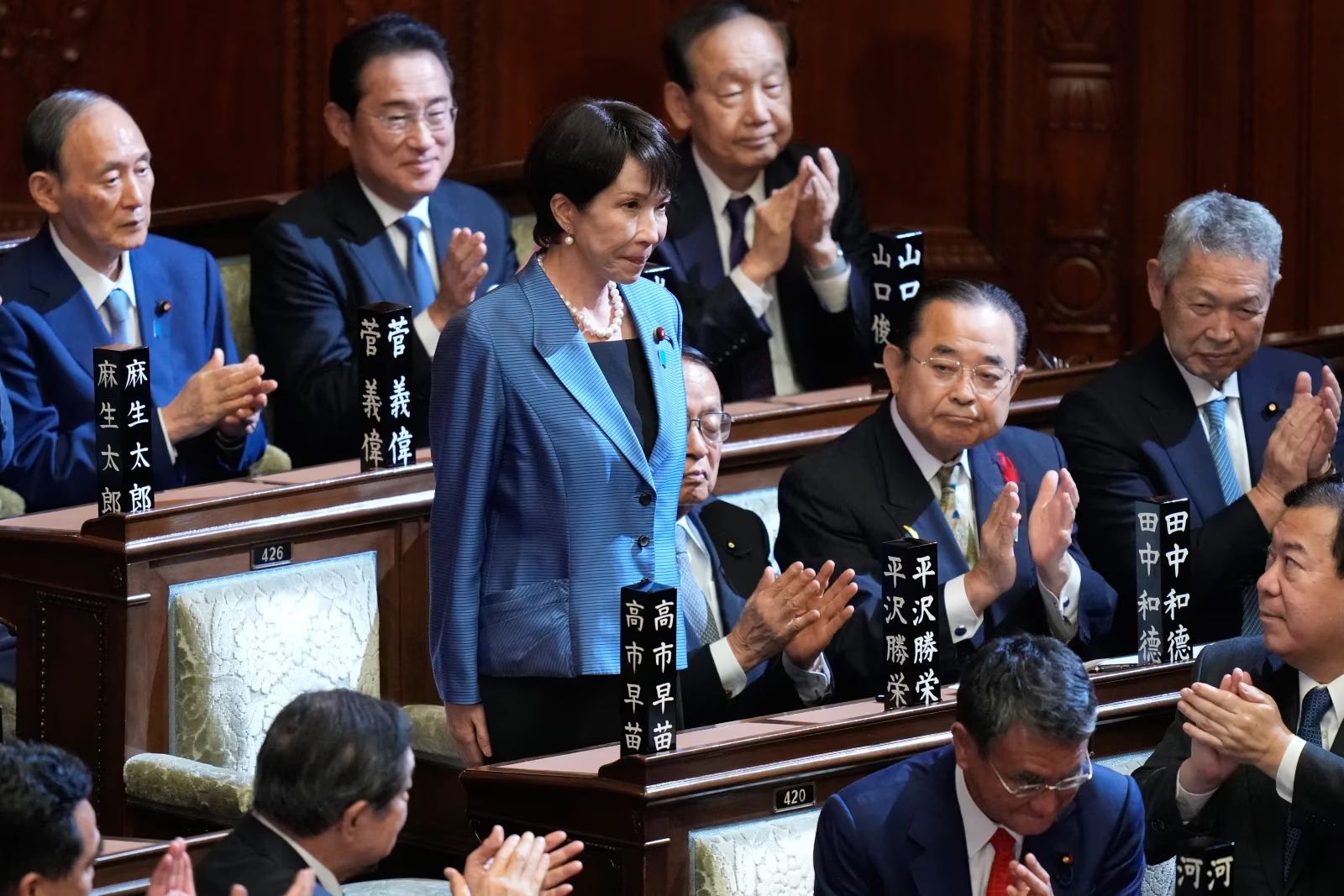Japan’s parliament on Tuesday elected ultraconservative politician Sanae Takaichi as the country’s first female prime minister—a day after her embattled party struck a coalition deal with a new partner, a move expected to push the ruling alliance further to the right.
Takaichi succeeds Shigeru Ishiba, ending a three-month period of political uncertainty and internal disputes following the Liberal Democratic Party’s (LDP) defeat in the July elections. Ishiba, who served as prime minister for just a year, resigned along with his cabinet, clearing the way for his successor.
In the lower house of parliament, which elects the prime minister, Takaichi received 237 votes—four more than the required majority. Yoshihiko Noda, leader of the main opposition Constitutional Democratic Party of Japan, received 149 votes. After the results were announced, Takaichi stood up and bowed deeply.
Her election was made possible by an alliance between the LDP and the Osaka-based right-wing Japan Innovation Party (Ishin no Kai). However, the new coalition does not yet command a majority in either chamber and will have to seek support from other opposition forces—making Takaichi’s government potentially fragile and short-lived.
The coalition agreement reflects Takaichi’s hardline and nationalist views. It was signed at the last moment, after the LDP lost its long-standing partner—the moderate Buddhist Komeito party, known for its centrist and pacifist stance. The split threatened the LDP’s hold on power, which it has effectively maintained for decades.
As party secretary-general Shunji Suzuki said on NHK television, the new government’s top priority will be tackling rising prices and stabilizing the economy. He apologized for the prolonged internal divisions and pledged that the coalition “will work with other opposition forces to meet the expectations of the people.”
Later that day, the 64-year-old Takaichi is expected to announce her cabinet lineup, which will include allies of influential party powerbroker Taro Aso and other politicians who backed her in the leadership race. Members of the Japan Innovation Party will not yet take ministerial positions—its leader Yoshimura said that would happen only after both sides strengthen mutual trust.
In her new role, Takaichi faces a tight schedule: this week she must deliver a policy address, hold talks with U.S. President Donald Trump, and take part in regional summits. By the end of December, the government is expected to unveil an economic stimulus and anti-inflation package aimed at easing public discontent.
Although Takaichi has become Japan’s first female prime minister, she shows little inclination to advance gender equality. She is among the politicians who have blocked pro-women legislation, supports preserving the male line of imperial succession, and opposes same-sex marriage as well as allowing spouses to have different surnames.
A protégé of the late former Prime Minister Shinzo Abe, Takaichi is expected to continue his agenda—strengthening defense, stimulating the economy, and seeking revisions to Japan’s pacifist constitution. Yet with only limited parliamentary backing, it remains unclear how far she can go.
A devotee of Margaret Thatcher, Takaichi was first elected to parliament in 1993 and has held several senior posts, including minister for internal affairs and minister for economic security, though her diplomatic experience remains limited.
Komeito’s withdrawal from the coalition stemmed from frustration over the LDP’s handling of corruption scandals that led to a string of electoral defeats. Centrists were also alarmed by Takaichi’s revisionist views of World War II history, her regular visits to the Yasukuni Shrine—a move that draws protests from Beijing and Seoul—and her recent xenophobic remarks.
In recent days, Takaichi has sought to soften her rhetoric: on Friday, instead of making a personal visit to the shrine, she sent a symbolic religious offering.
